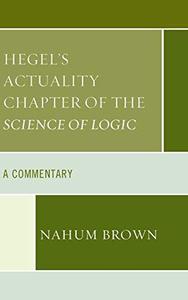
Hegel's Actuality Chapter of the Science of Logic: A Commentary By Nahum Brown
2018 | 126 Pages | ISBN: 1498560563 | PDF | 2 MB
This book explores Hegel's theory of modality (actuality, possibility, necessity, contingency) through extremely close textual analysis of the "Actuality" chapter of Hegel's Science of Logic. The "Actuality" chapter is the equivalence of Aristotle's momentous Metaphysics book 9. Because of this, Hegel's chapter deserves the same thorough investigation into its complex insights and argumentation. This book situates Hegel's insights about possibility and necessity within historical and contemporary debates about metaphysics, while analyzing some of the most controversial themes of Hegel's theory, such as the question of the ontological status of unactualized possibilities, the relationship between contradiction and possibility, and the claim that necessity leads to freedom. This book also contributes to an ongoing philosophical inquiry into the nature of dialectics by articulating Hegel's "Actuality" chapter as a coherent argument divided into twenty-seven premises.
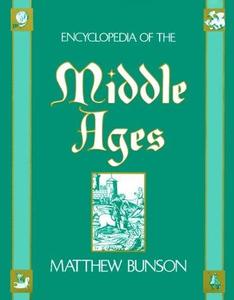
Encyclopedia of the Middle Ages By Matthew Bunson
1995 | 498 Pages | ISBN: 0816024561 | EPUB | 3 MB
With fact-filled A-to-Z entries on the events, figures, and ideas of the period that stretched from the collapse of the Roman Empire to the dawn of the Renaissance, this volume provides students, history buffs, and casual readers with excellent research material.Among the topics covered are:-- The burgeoning feudal society, which formed the basis of a stable economic community-- The Magna Carta, which presaged later discussions of individual rights-- The growth of the Islamic Empire-- The development of Christianity and the Crusades
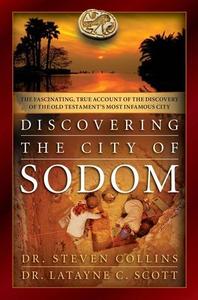
Discovering the City of Sodom: The Fascinating, True Account of the Discovery of the Old Testament's Most Infamous City By Steven Collins; Latayne C. Scott
2013 | 352 Pages | ISBN: 1451684304 | EPUB | 6 MB
The fascinating, true account of the quest for one of the Old Testament's most infamous cities.Like many Christians today in the academic world, Dr. Steven Collins felt pulled in different directions when it came to apparent conflicts between the Bible and scholarly research and theory-an intellectual crisis that inspired him to lay it all on the line as he set off to locate the lost city of Sodom.Recounting Dr. Collins's quest for Sodom in absorbing detail, this adventure-cum-memoir reflects the tensions that define biblical archaeology as it narrates a tale of discovery. Readers follow "Dr. C" as he tracks down biblical, archaeological, and geographical clues to the destruction of Sodom and Gomorrah, narrowing the list of possible sites as he weighs evidence and battles skeptics. Finally, he arrives at a single location that looms as the only option: a massive ancient ruin called Tall el-Hammam in the Hashemite Kingdom of Jordan.Many scholars who were initially opposed to Dr. Collins's theory now concede that history books may need to be rewritten in light of his groundbreaking discovery. It-along with several other recent finds-is challenging the assumptions of academics and asserting a new voice in the controversy of biblical archaeology and the dispute over using the Bible as a credible historical source.***From respected archaeologist Dr. Steven Collins and award-winning author Dr. Latayne C. Scott comes the fascinating, true account of the frustrating search and exciting excavation of the city the Bible calls Sodom, which scholars and others had "misplaced" for hundreds of years.Like many modern-day Christians, Dr. Collins struggled with what seemed to be a clash between his heritage of belief in the Bible and the research regarding ancient history and human evolution. This crisis of faith led him to embark on a quest to put both his archaeological education and the Bible to the test by seeking out the lost ancient city, an expedition that has led to one of the most exciting finds in recent archaeology.Challenging the assumptions of academics around the world,Discovering the City of Sodommay well inspire a revision of the history books. Dr. Collins has become a new voice in the controversy over using the Bible as a credible source of understanding the past-and opened a new chapter in the struggle over the soul of biblical archaeology.
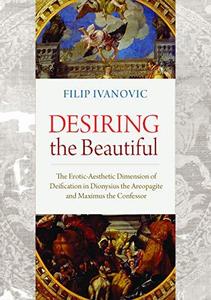
Desiring the Beautiful: The Erotic-Aesthetic Dimension of Deification in Dionysius the Areopagite and Maximus the Confessor By Filip Ivanovic
2019 | 265 Pages | ISBN: 0813231892 | PDF | 2 MB
Desiring the Beautiful studies the concept of deification, theosis, in two of the most influential early Christian philosopher-theologians, who might be considered as theoretical consolidators of the idea of theosis, and argues that the proper understanding of their central soteriological concept must take into account its dimension of love and beauty. The core of the book consists of six chapters, each dedicated to the three central concepts in two thinkers, and while they can be considered as distinct studies, they are, however, elements which lead to the synoptic vision of the erotic-aesthetic dimension of deification. The three themes have been treated systematically, followed by a synthesis and comparison of convergence and divergence between Dionysus and Maximus. The core of the task stands, of course, in the texts and their interpretation, so the method employed was unavoidably hermeneutical as well. While Dionysius and Maximus are among the most studied Church fathers, the context in which love, beauty and deification relate has not been thoroughly examined so far, and thus Desiring the Beautiful complements existing studies by emphasizing this important aspect of deification as understood by its two chief advocates. Primarily intended for scholars of patristics and Byzantine philosophy, the book can serve as a substantial introduction to the overall thought of Dionysius and Maximus, so it will be of use also to readers interested in late antique and Byzantine studies, early Christian theology, and the relationship between Greek philosophy and Christianity.Review"Ivanovic's masterful delineation of the theological 'heart' of the Dionysian and Maximian writings - love, beauty, deification - shows a deef affinity with and well excercised theological instinct for the overall ethos of Byzantine theology."―Bogdan G. Bucur, Duquesne University"In his carefully thought out and clearly expounded text Filip Ivanovic offers distinguished, judicious, and astonishing perspectives, bridging late antiquity and late modernity. Desiring the Beautiful, with its excellent scholarship, can also serve as a reliable and enjoyable introduction for those who have not yet mined the rich depths of Eastern patristic theology."―Sigurd Bergmann, Norwegian University of Science and Technology, Trondheim"Filip Ivanovic adds an important voice to the conversation on the intuitive and aesthetical dimensions of the theological enterprises of Maximus and of Dionysius the Areopagite. Erôs, in all its depth and richness as an expression of the creature's deep desire for transcendence and transformation, is certainly crucial to understanding the overall projects of both writers with respect to contemplation, asceticism, liturgical devotion, ethics, and other aspects of their work. Ivanovic offers fresh insight and helps bring the erotic and the aesthetic to the very forefront of the investigation of these two luminaries of early Byzantine theology."―Paul M. Blowers, Emmanuel Christian Seminary at Milligan College"In this fine study, Filip Ivanovic explores central themes in two of the great Christian Neoplatonic thinkers of late antiquity, Dionysius the Areopagite and Maximus the Confessor. Both have a rich and complex vision of the way in which, through love of the beautiful, humankind is drawn into union with God, deification. Ivanovic makes clear, too, their differences, drawing out a fundamental ascetic dimension in Maximus's thought, present only implicitly and inchoately in Dionysius. Ivanovic establishes himself as one of the stars in what appears to be a brilliant constellation of young scholars of early Christian philosophy"―Andrew Louth, Durham UniversityAbout the AuthorFilip Ivanovic is Director of the Center for Hellenic Studies (Podgorica, Montenegro) and author of Symbol and Icon: Dionysius the Areopagite and Iconoclastic Crisis.
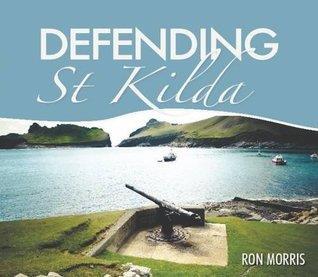
Defending St Kilda By Ron Morris
2013 | 140 Pages | ISBN: 190744341X | PDF | 23 MB
In this book, based on new research and with archive photographs, Ron Morris tells the intriguing and little‑known story of the role which St Kilda played in World War 1, including the establishment of a wireless station and Royal Navy base to monitor enemy movements in the North Atlantic. In May 1918, a German U-boat entered Village Bay and opened fire, following which a gun was erected on St Kilda next to the Manse to respond to future attacks - although this was never used in anger.
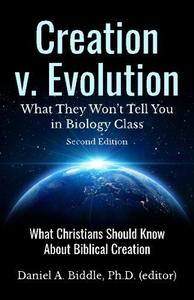
Creation V. Evolution: What They Won't Tell You in Biology Class: What Christians Should Know about Biblical Creation By Daniel A. Biddle
2015 | 292 Pages | ISBN: 1522861734 | EPUB | 3 MB
This book is essential for Christians attending public high school or college-especially before they take biology or earth science classes. Written by leading Creation Scientists, this book provides solid answers to these critical questions that will help Christian high school and college students solidify their faith and grow roots to withstand the evolution-based teaching in today's schools. The topics covered include: - Can We Trust the Bible? - Did Noah's Flood Really Happen? - The Age of the Earth, Dating Methods, and Evolution - Do Fossils Show Evolution? - Natural Selection & Darwin's Finches - Whale Evolution - Human Evolution - What about the "Race Groups"? - Chimp-Human DNA Similarities - Vestigial Structures
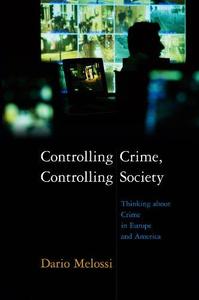
Controlling Crime, Controlling Society: Thinking about Crime in Europe and America By Dario Melossi
2009 | 321 Pages | ISBN: 0745634281 | PDF | 3 MB
This text offers an overview of anxieties about crime in Europe and the U.S. and the public and political responses to it. It compares a European reliance on the 'state' to the U.S. system of social control.
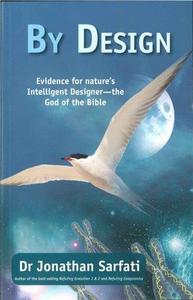
By Design: Evidence for Nature's Intelligent Designer By Jonathan Sarfati
2008 | 260 Pages | ISBN: 0949906727 | EPUB | 2 MB
At last, a definitive work on design by a leading biblical creationist! Today, the ID (intelligent design) movement is capturing headlines (and igniting controversy) around the world. But in the process, many are coming to think that a credible challenge to the dominant Darwinian naturalism of our time means backing away from a clear stand for the truth of the Bible. Now creationist heavyweight Jonathan Sarfati, whose Refuting Evolution has the most copies in print of any creation book ever, challenges this mindset head on. In the process, By Design is set to become a classic of the creation movement in the same vein as Dr Sarfati s comprehensive Refuting Compromise, which is arguably the most powerful biblical and scientific defense of straightforward Genesis in existence.Brilliant, deep and engaging the battle at the front lines - classic Sarfati! --Dr. David Catchpoole, PHDWhen master logician/scientist Jonathan Sarfati takes on another front of the creation/evolution battle, his fans know they're going to experience an intellectual feast of cut-and- thrust philosophical swordsmanship with the opponents of Genesis creation/ID. But readers are in for an additional treat, too - his passion (not revealed in his previous books) for digging into the details of life's breathtaking designs. --Dr. Carl Wieland
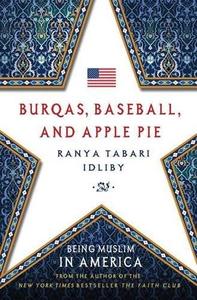
Burqas, Baseball, and Apple Pie: Being Muslim in America By Ranya Tabari Idliby
2014 | 256 Pages | ISBN: 0230341845 | EPUB | 2 MB
[center]
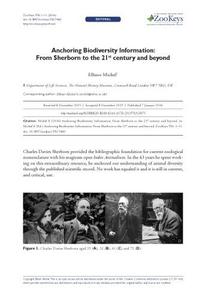
Anchoring biodiversity information : from Sherborn to the 21st century and beyond By Sherborn, Charles Davies
2016 | 320 Pages | ISBN: 954642806X | PDF | 50 MB
Names are our primary framework for organizing information on the living world. But how do we tie scientific names to a foundation so they provide stability and repeatability to otherwise fluid conceptual topics such as taxonomies? Biodiversity informatics aims to solve this issue, and its founding father was Charles Davies Sherborn. His magnum opus z provided the bibliographic foundation for current zoological nomenclature. In the 43 years he spent working on this extraordinary resource, he anchored our understanding of animal diversity through the published scientific record. No work has equaled it and it is still in current, and critical, use.Anchoring Biodiversity Information celebrates Sherborn, his contributions, context and the future for the discipline of biodiversity informatics. The papers in this volume fall into three general areas. Papers in the first section present facets of Sherborn as a man, scientist and bibliographer, and describe the historical context for taxonomic indexing from the 19th century to today. Papers in the second section discuss current tools and innovations for bringing legacy biodiversity information into the modern age. The final section tackles the future of biological nomenclature, including digital access, innovative publishing models and the changing tools and sociology needed for communicating taxonomy.


